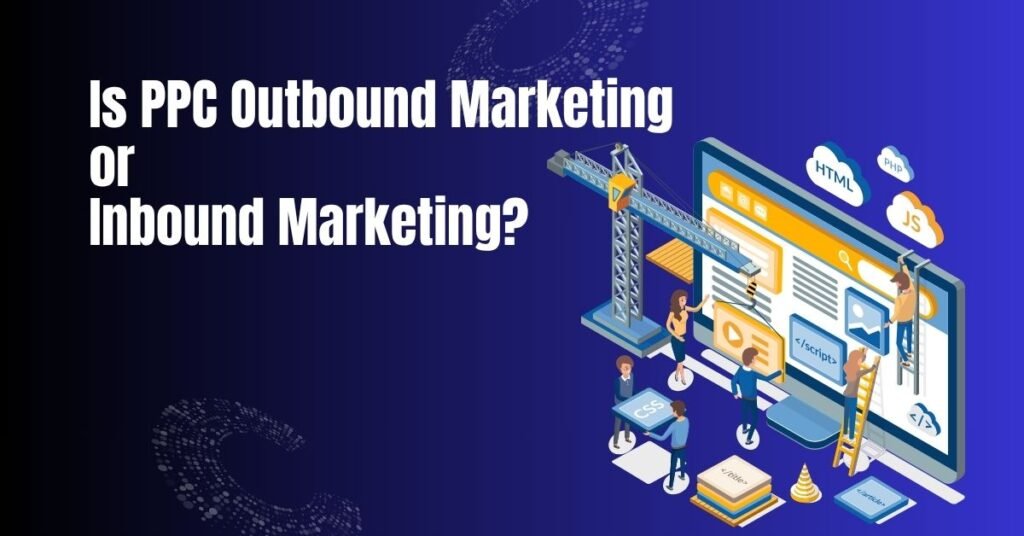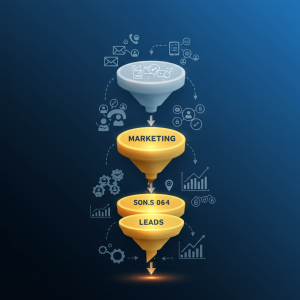Is PPC Outbound Marketing? A Comprehensive Guide

Pay-per-click advertising (PPC) has been a staple of digital marketing strategies for years. Its effectiveness in driving immediate results makes it a favorite among marketers. However, one long-standing question remains: Is PPC considered outbound marketing, or does it fit better within the inbound marketing framework? Understanding where PPC falls can help businesses utilize it more effectively in their campaigns.
This article explores PPC through the lens of outbound marketing. You’ll learn how PPC aligns with outbound strategies, how it blurs the line with inbound, and how you can leverage PPC to maximize the impact of your campaigns.
What Is Outbound Marketing?
To determine whether PPC counts as outbound marketing, it’s essential to understand what outbound marketing is.
Outbound marketing, often referred to as “traditional marketing,” involves reaching out to a broad audience with content or messaging. Instead of waiting for people to discover your brand, outbound strategies actively push your message to potential customers. Common examples include TV ads, billboards, cold calling, direct mail campaigns, and email blasts.
Key characteristics of outbound marketing include:
- Proactive outreach: Brands initiate contact with the audience.
- Broad targeting: Audiences are often not segmented with precise filters.
- Less permission-based: Ads or messages are delivered regardless of whether the recipient has explicitly expressed interest.
What Is PPC Marketing?
Pay-per-click advertising, or PPC, is a form of online advertising in which advertisers pay a fee each time their ad is clicked. It allows businesses to bid on ad placement in search engines, social media platforms, or other websites. Common PPC platforms include Google Ads, Facebook Ads, and Bing Ads.
PPC ads generally appear at the top of search engine results pages (SERPs) or are shown as display ads on partnered websites. Here’s how PPC works in a nutshell:
- Businesses choose keywords or audience demographics to target.
- They bid on ad placements, competing against other advertisers.
- Ads are shown to users based on the chosen criteria.
- Advertisers pay only when someone clicks on the ad.
The granular targeting and cost-effectiveness of PPC make it an appealing choice for marketers across industries.
Reasons PPC Is Considered Outbound Marketing
PPC can often be classified as outbound marketing because many of its features align with traditional outbound strategies. Here’s why:
1. Proactive Targeting
PPC actively pushes ads to users, especially in display and social media advertising formats. Unlike inbound tactics, such as creating blog posts or organic SEO content, PPC doesn’t wait for prospects to find you. Instead, you’re paying to place your message in front of them.
For instance, a Google Display Ad for your product might appear on a website that users are browsing, even if they weren’t specifically searching for your product beforehand.
2. Message First, Interest Later
Much like outbound marketing, PPC connects with individuals who may not have heard of your business before or shown prior interest. For example, social media ads targeting users based solely on broad demographic data would fit the outbound model. You’re sending a message to an audience in the hopes of sparking their interest.
3. Interruptive by Nature
Outbound marketing methods are often interruptive, and PPC ads share this characteristic. Display ads, for instance, pop up on websites or apps, drawing attention away from what users are doing. Similarly, search ads appear at the top of SERPs and can be seen as interrupting the organic search process.
Blurring the Lines Between PPC and Inbound Marketing
While PPC often resembles outbound marketing, it also overlaps with inbound marketing in several key areas. This dual nature of PPC blurs the lines between the two approaches.
1. Search Ads and User Intent
Search ads (a major component of PPC) are heavily intent-driven. This aligns with inbound marketing principles, which are all about meeting users at the right moment in their buyer’s journey. When someone types in a query like “best noise-canceling headphones,” your PPC ad appears because it matches their search intent.
Unlike outbound tactics, which target individuals regardless of their interest, search ads interact with users who are actively looking for products, services, or solutions.
2. Targeting Precision
Modern PPC platforms offer highly precise targeting options. For example, you can show ads based on search keywords, location, age, or past interactions with your brand. This personalization mirrors the inbound ethos of delivering value to an audience based on their needs and behaviors.
3. Permission-Based Advertising
Remarketing is another inbound-leaning feature of PPC. For instance, if someone visits your website but doesn’t make a purchase, a remarketing ad can re-engage them on social media or other platforms they browse. Remarketing focuses on users who have already expressed a level of interest, making it permission-based and therefore closer to inbound marketing.
Leveraging PPC for Both Outbound and Inbound Strategies
Understanding that PPC can function as both outbound and inbound marketing allows businesses to maximize its potential. Here’s how you can use it for both approaches.
Outbound Strategies
- Use display and video ads to introduce your brand to new audiences who may not know about your products.
- Run broad targeting campaigns that appeal to general demographics to build awareness.
- Implement impression-based campaigns for branding purposes, even if users don’t click on your ad.
Inbound Strategies
- Focus on search ads with intent-driven keywords to capture users actively searching for your offerings.
- Set up remarketing campaigns to engage people who’ve interacted with your website or content.
- Pair PPC with inbound content like blogs, guides, and videos to drive clicks to valuable resources.
Is PPC Right for Your Business?
Whether you consider PPC outbound or inbound marketing, it’s clear that it remains a powerful tool for driving results. By understanding how PPC fits into your broader marketing strategy, you can design campaigns that align with your audience’s needs while supporting your business goals.
If your campaigns rely heavily on proactive outreach or brand awareness, PPC can serve as an effective outbound tactic. On the other hand, if your goal is to capture search intent or nurture leads, it blends well with inbound strategies.
You can learn more about: PPC Marketing: Inbound or Outbound Strategy?





